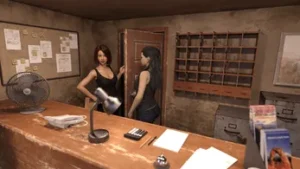
Play Thirty Days
Thirty Days review
Explore the Features, Mechanics, and Player Experiences of Thirty Days
Thirty Days is a unique interactive game that has captured the attention of players looking for immersive and engaging gameplay. This guide dives deep into the core aspects of Thirty Days, highlighting its mechanics, storyline, and player strategies. Whether you’re new to the game or seeking tips to enhance your experience, this article provides a comprehensive overview to help you navigate the game with confidence and enjoyment.
Understanding Thirty Days: Gameplay and Features
Let me tell you about the first time I booted up Thirty Days. I was expecting a chill puzzle experience, but what I got was a beautifully daunting clock staring back at me, counting down in real-time. My initial thought was, “Wait, I have to solve this now?” It was my first real taste of the game’s unique pressure, and I was instantly hooked. This Thirty Days game overview is your friendly guide through that same electrifying journey.
What is Thirty Days? Overview and Core Concept 🗓️
At its heart, Thirty Days is a narrative puzzle game where you have exactly one month—both in-game and in real life—to uncover a mystery. The core concept is its brilliant, and slightly terrifying, use of real-time progression. The game’s internal clock is synced to yours. If it’s 11 PM on a Tuesday for you, it’s 11 PM on a Tuesday in the game world. This isn’t a game you binge; it’s an experience you live with for a full 30-day cycle.
The genre is a masterful blend of environmental storytelling and time-management puzzle-solving. You’re not just clicking on objects; you’re inhabiting a space that changes with the time of day and the date. I remember logging in one rainy afternoon in the game, only to find a crucial clue had washed into view near a storm drain—a detail that simply wasn’t there the sunny day before. This Thirty Days game overview wouldn’t be complete without emphasizing that the world feels truly alive, and your window to interact with it is always closing.
The unique hook is the permanence. There are no do-overs within a cycle. If you miss a clue on day 14, you cannot go back. You either wait for it to potentially reappear in the next cycle or you press on with a gap in your knowledge. This creates an unparalleled sense of consequence and makes every discovery feel earned. Getting a complete Thirty Days game overview means understanding that your patience and observation are just as important as your problem-solving skills.
Key Gameplay Mechanics and User Interface 🎮
Learning how to play Thirty Days is less about mastering complex controls and more about understanding how to “read” the world. The core loop involves exploring a detailed, semi-open environment, examining objects, and piecing together clues that advance the narrative.
The Thirty Days user interface is minimalist by design, refusing to break your immersion. 🖱️
- Your cursor changes contextually when it hovers over an interactable object.
- A small, elegant journal in the corner of the screen logs your findings and thoughts.
- The most prominent UI element is the in-game clock and calendar, a constant reminder of your most precious resource: time.
Interaction is intuitive. You click to move, click to examine, and drag items in your inventory to combine or use them. The real magic of the Thirty Days gameplay mechanics lies in the passage of time. Certain events only occur at specific times, and some clues are only visible under particular conditions—like a shadow cast only at noon, or a light that only turns on after dusk.
Here’s a breakdown of the core Thirty Days gameplay mechanics you need to master:
| Mechanic | Description | Player Impact |
|---|---|---|
| Real-Time Clock | The game world progresses in sync with your local time. | Forces strategic planning; you can’t play constantly, so you must choose when to log in. |
| Contextual Interaction | Objects and environments change based on the time and date. | Encourages repeated visits to the same locations to discover new clues. |
| Permanent Journal | All clues, notes, and discoveries are automatically logged. | Serves as your memory and the primary tool for connecting narrative dots. |
| Limited Inventory | You can only carry a few key items at a time. | Adds a layer of resource management and decision-making to puzzle-solving. |
My biggest “aha!” moment was realizing that the Thirty Days user interface wasn’t hiding anything from me. The lack of waypoints and quest markers was intentional. The game was trusting me to be smart enough to figure it out, which made the victories so much sweeter.
Challenges and Progression System 💡
The Thirty Days challenges are what truly define the experience. They are less about quick reflexes and more about patience, observation, and logical deduction. The primary challenge is, unsurprisingly, the clock. Managing your real-life time to be in the right virtual place at the right time is the game’s biggest hurdle. I missed a full story beat early on because I was out with friends on a Friday night—the exact time a character appeared in the town square. It was a brutal but brilliant lesson.
The Thirty Days progression system is seamlessly woven into the narrative. You don’t earn experience points or level up. Instead, progression is measured by the depth of the story you uncover and the number of secrets you unlock in your journal. Solving a major puzzle doesn’t give you a trophy; it opens up a new branch of the story or reveals a sequence of events that were previously hidden.
Common Thirty Days challenges include:
* Time-Gated Puzzles: A safe that can only be opened during a 10-minute window at midnight.
* Environmental Sequencing: Understanding how a series of events over multiple days creates a single clue.
* Pattern Recognition: Spotting subtle changes in the environment that repeat on a cycle.
When it comes to Thirty Days puzzle tips, my number one piece of advice is to take notes outside the game. The in-game journal is fantastic, but keeping a physical notepad or a digital doc with your own theories, timelines, and sketches can be a game-changer. I started mapping out character movements and weather patterns, and suddenly, puzzles that seemed impossible clicked into place.
Another crucial Thirty Days puzzle tip is to embrace failure. Your first 30-day cycle will likely be incomplete. And that’s okay! Think of it as a reconnaissance mission. Take note of what you saw and when you saw it. This knowledge is your greatest asset for the next cycle. The Thirty Days progression system is designed for repeated playthroughs, where your real-world knowledge is the only thing you carry over.
Learning how to play Thirty Days effectively means syncing your life with the game’s rhythm. Check in for 15 minutes in the morning, maybe during your lunch break, and again in the evening. This cadence will expose you to the world in all its different states. Remember, the Thirty Days challenges are a marathon, not a sprint. The ultimate reward isn’t just an ending screen; it’s the satisfaction of having truly solved a mystery, one day at a time. 🏆
Thirty Days offers a distinctive and engaging experience that combines interactive storytelling with challenging gameplay elements. Understanding its mechanics and progression system can significantly enhance your enjoyment and success in the game. Whether you’re tackling puzzles or exploring the storyline, this guide aims to equip you with the knowledge and strategies to make the most of your time with Thirty Days. Dive in, explore, and enjoy the unique adventure that awaits.






















